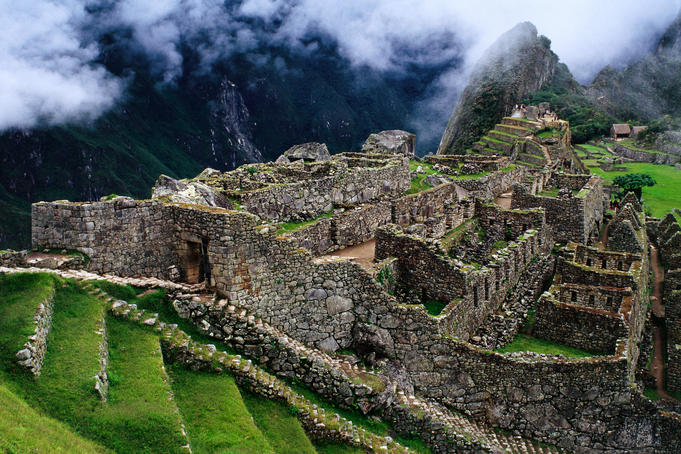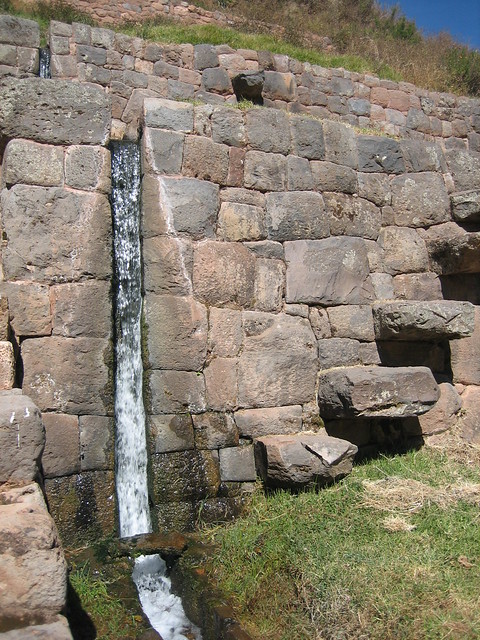Post by 1dave on Oct 31, 2015 7:48:42 GMT -5
Why did "THEY" go to all that work?
NASA Adds to Evidence of Mysterious Ancient Earthworks


By RALPH BLUMENTHAL OCT. 30, 2015
High in the skies over Kazakhstan, space-age technology has revealed an ancient mystery on the ground.
Satellite pictures of a remote and treeless northern steppe reveal colossal earthworks — geometric figures of squares, crosses, lines and rings the size of several football fields, recognizable only from the air and the oldest estimated at 8,000 years old.
The largest, near a Neolithic settlement, is a giant square of 101 raised mounds, its opposite corners connected by a diagonal cross, covering more terrain than the Great Pyramid of Cheops. Another is a kind of three-limbed swastika, its arms ending in zigzags bent counterclockwise.
Described last year at an archaeology conference in Istanbul as unique and previously unstudied, the earthworks, in the Turgai region of northern Kazakhstan, number at least 260 — mounds, trenches and ramparts — arrayed in five basic shapes.
Continue reading the main story
Related Coverage
. . Critic’s Notebook: Stonehenge at Dawn, Inside the CircleSEPT. 8, 2014
. . Geoglyphs, geometric designs carved into the earth, have become increasingly visible with the deforestation of the Amazon.
. . Land Carvings Attest to Amazon’s Lost WorldJAN. 14, 2012
. . Officials from Peru's Ministry of Culture, wearing special shoes, walk along the trail left by Greenpeace activists.
. . Peru Plans to Charge Greenpeace Activists for Damage to Nazca LinesDEC. 14, 2014
. . Observatory: Before the Silk Road, the Grain RoadAPRIL 7, 2014
Spotted on Google Earth in 2007 by a Kazakh economist and archaeology enthusiast, Dmitriy Dey, the so-called Steppe Geoglyphs remain deeply puzzling and largely unknown to the outside world.
NASA Adds to Evidence of Mysterious Ancient Earthworks

One of the enormous earthwork configurations photographed from space is known as the Ushtogaysky Square, named after the nearest village in Kazakhstan. Credit DigitalGlobe, via NASA

The Bestamskoe Ring is among the so-called Steppe Geoglyphs in Kazakhstan — at least 260 earthwork shapes made up of mounds, trenches and ramparts, the oldest estimated at 8,000 years old, recognizable only from the air. Credit DigitalGlobe, via NASA
By RALPH BLUMENTHAL OCT. 30, 2015
High in the skies over Kazakhstan, space-age technology has revealed an ancient mystery on the ground.
Satellite pictures of a remote and treeless northern steppe reveal colossal earthworks — geometric figures of squares, crosses, lines and rings the size of several football fields, recognizable only from the air and the oldest estimated at 8,000 years old.
The largest, near a Neolithic settlement, is a giant square of 101 raised mounds, its opposite corners connected by a diagonal cross, covering more terrain than the Great Pyramid of Cheops. Another is a kind of three-limbed swastika, its arms ending in zigzags bent counterclockwise.
Described last year at an archaeology conference in Istanbul as unique and previously unstudied, the earthworks, in the Turgai region of northern Kazakhstan, number at least 260 — mounds, trenches and ramparts — arrayed in five basic shapes.
Continue reading the main story
Related Coverage
. . Critic’s Notebook: Stonehenge at Dawn, Inside the CircleSEPT. 8, 2014
. . Geoglyphs, geometric designs carved into the earth, have become increasingly visible with the deforestation of the Amazon.
. . Land Carvings Attest to Amazon’s Lost WorldJAN. 14, 2012
. . Officials from Peru's Ministry of Culture, wearing special shoes, walk along the trail left by Greenpeace activists.
. . Peru Plans to Charge Greenpeace Activists for Damage to Nazca LinesDEC. 14, 2014
. . Observatory: Before the Silk Road, the Grain RoadAPRIL 7, 2014
Spotted on Google Earth in 2007 by a Kazakh economist and archaeology enthusiast, Dmitriy Dey, the so-called Steppe Geoglyphs remain deeply puzzling and largely unknown to the outside world.




















